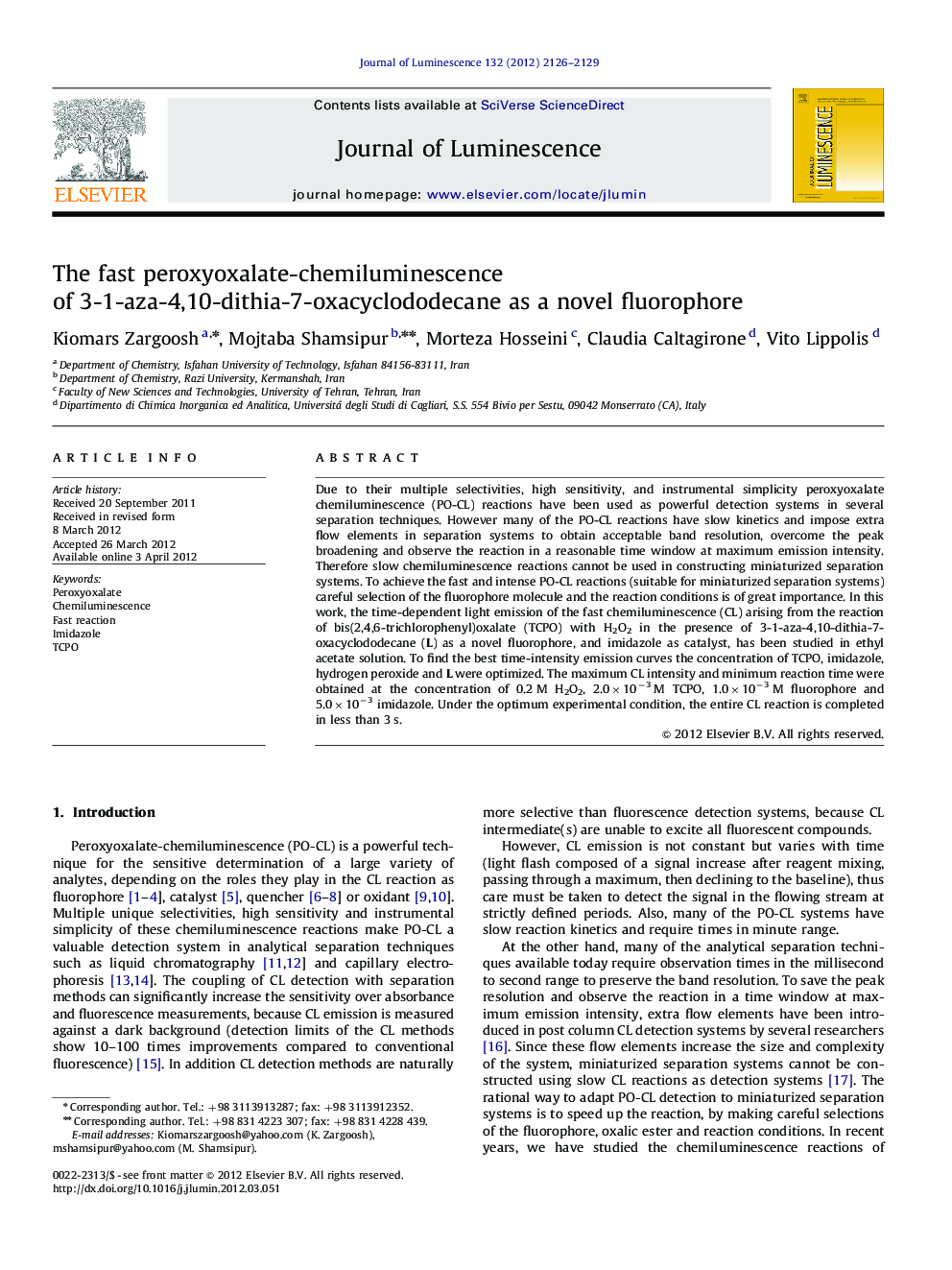| Article ID | Journal | Published Year | Pages | File Type |
|---|---|---|---|---|
| 5401102 | Journal of Luminescence | 2012 | 4 Pages |
Due to their multiple selectivities, high sensitivity, and instrumental simplicity peroxyoxalate chemiluminescence (PO-CL) reactions have been used as powerful detection systems in several separation techniques. However many of the PO-CL reactions have slow kinetics and impose extra flow elements in separation systems to obtain acceptable band resolution, overcome the peak broadening and observe the reaction in a reasonable time window at maximum emission intensity. Therefore slow chemiluminescence reactions cannot be used in constructing miniaturized separation systems. To achieve the fast and intense PO-CL reactions (suitable for miniaturized separation systems) careful selection of the fluorophore molecule and the reaction conditions is of great importance. In this work, the time-dependent light emission of the fast chemiluminescence (CL) arising from the reaction of bis(2,4,6-trichlorophenyl)oxalate (TCPO) with H2O2 in the presence of 3-1-aza-4,10-dithia-7-oxacyclododecane (L) as a novel fluorophore, and imidazole as catalyst, has been studied in ethyl acetate solution. To find the best time-intensity emission curves the concentration of TCPO, imidazole, hydrogen peroxide and L were optimized. The maximum CL intensity and minimum reaction time were obtained at the concentration of 0.2Â M H2O2, 2.0Ã10â3Â M TCPO, 1.0Ã10â3Â M fluorophore and 5.0Ã10â3 imidazole. Under the optimum experimental condition, the entire CL reaction is completed in less than 3Â s.
⺠Fast peroxyoxalate chemiluminescence reaction. ⺠Complete PO-CL reaction in less than 3 s.. ⺠3-1-aza-4,10-dithia-7-oxacyclododecane as a new CL reagent.
